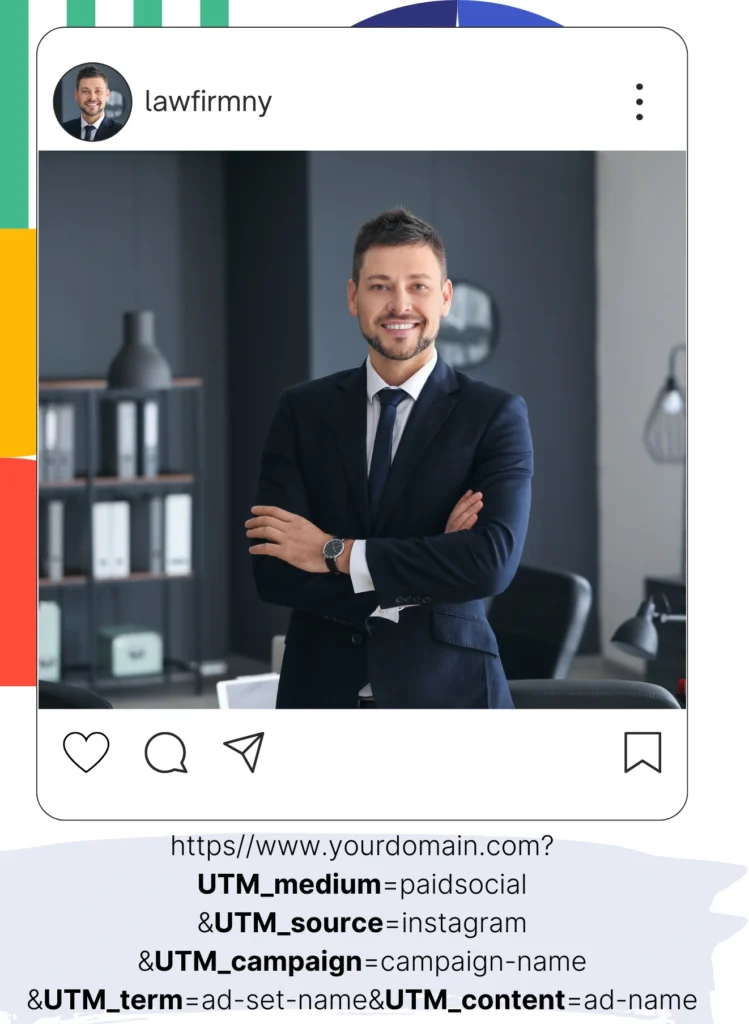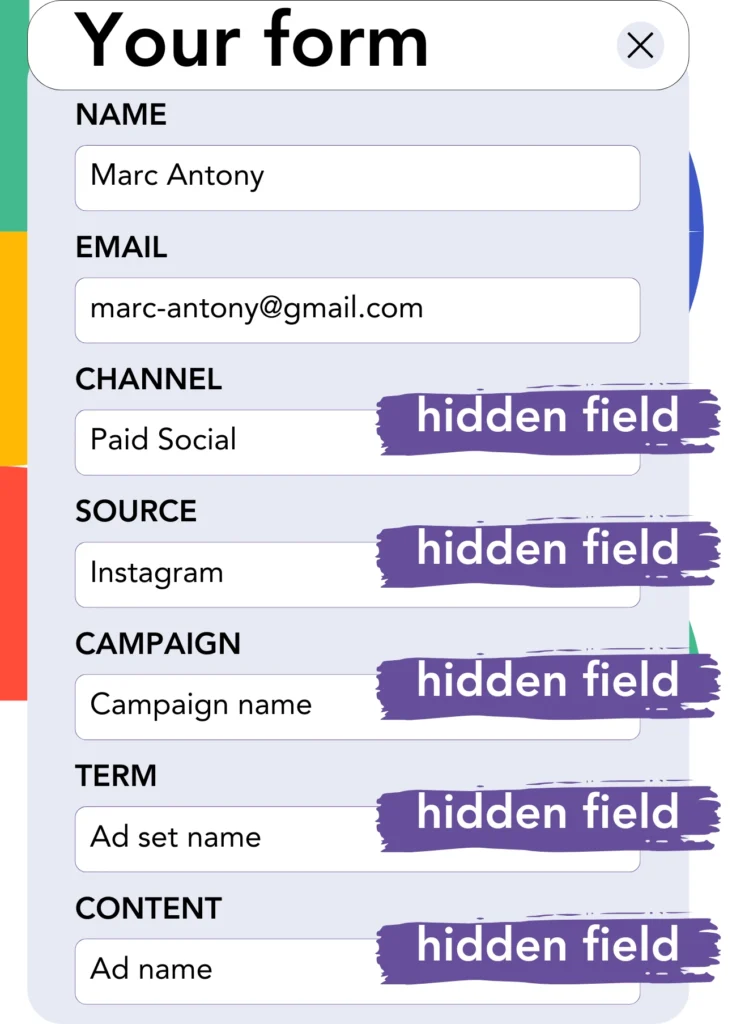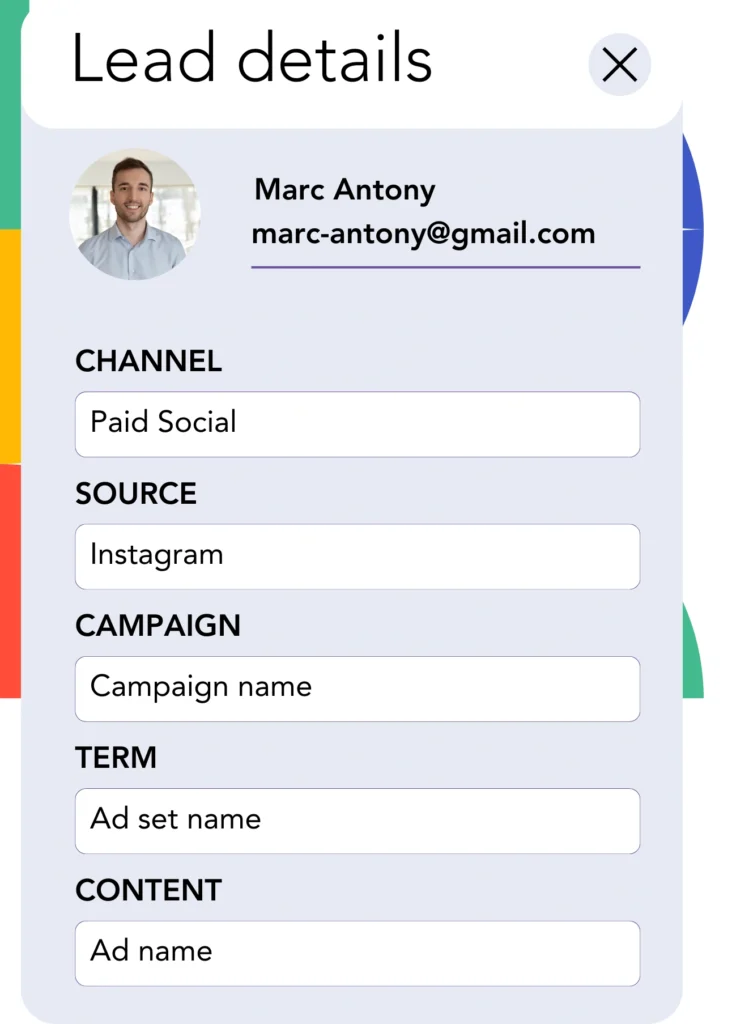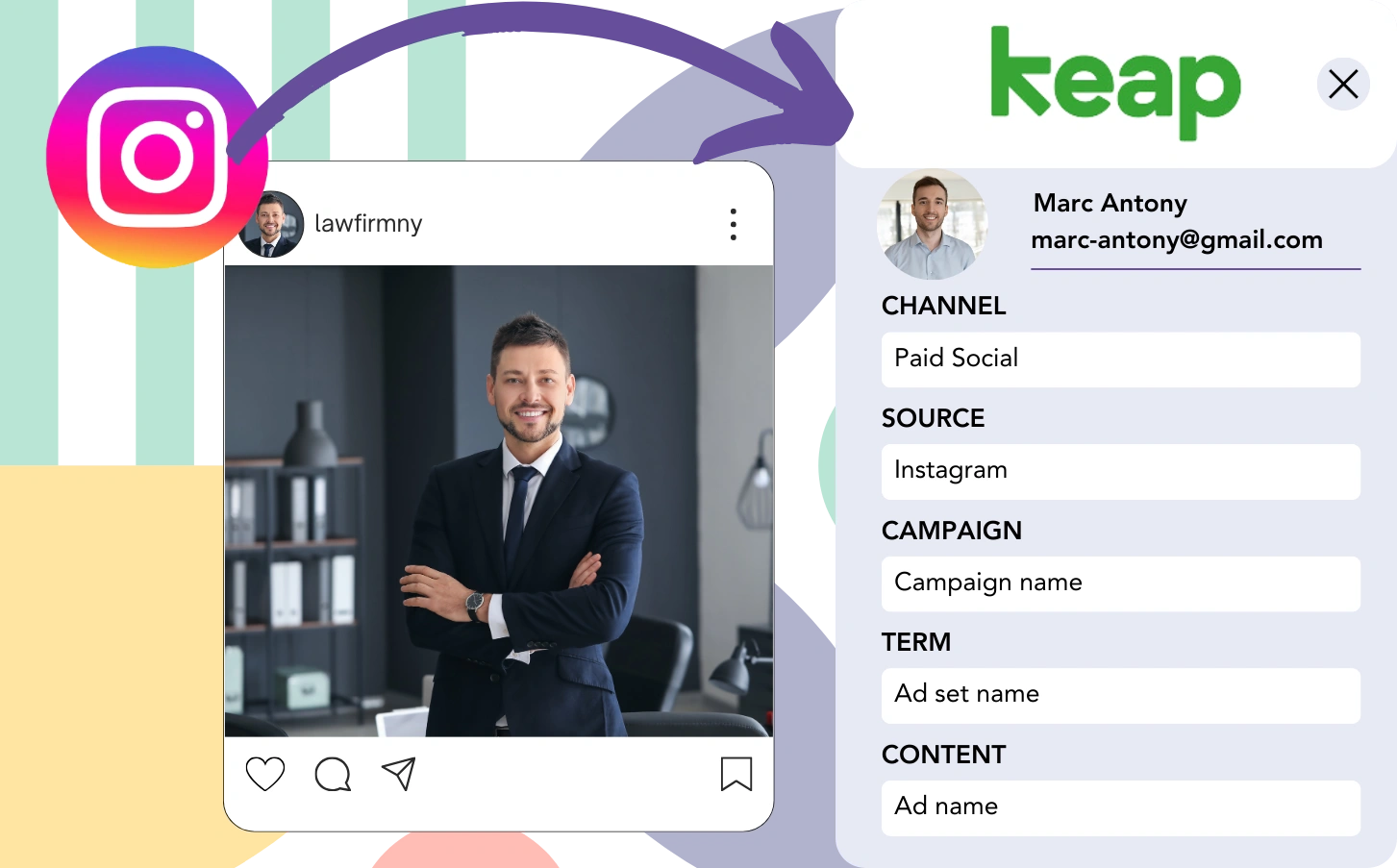Instagram leads are sent to Keap, but identifying which specific ad each lead came from is impossible. Similarly, when these leads convert to customers, you lose track of the original Instagram ad.
This lack of tracking makes it hard to assess the effectiveness of your Instagram ads, creating uncertainty about which ads are bringing in leads and customers. You might end up spending on ads without knowing their actual results.
Fortunately, there’s a simple approach to trace each lead to the exact Instagram campaign, ad set, and ad behind it.
Let’s walk through each step together!
How to Track Instagram Ads in Keap
Step 1: Add Leadsources in the head tag of your website

Step 2: Add the UTM parameters to your Instagram ads

Add UTM parameters in your ad URL to track Instagram ad specifics—campaign, ad set, and ad. Here’s a template:
UTM_medium=paidsocialUTM_source=instagramUTM_campaign=campaign-nameUTM_term=ad-set-nameUTM_content=ad-name
The final URL should be formatted as:
https://www.yourdomain.com/?UTM_medium=paidsocial&UTM_source=instagram&UTM_campaign=campaign-name&UTM_term=ad-set-name&UTM_content=ad-nameNote that Leadsources collects every piece of lead source information, even without UTM parameters, ensuring complete tracking for all leads.
Step 3: Add the hidden fields in your form

Hidden fields consist of form fields that users do not see, but they can store information that accompanies the form submission.
In your form, Leadsources stores lead source data in hidden fields. Consequently, when a lead submits the form, the hidden fields are filled with Instagram ad data by Leadsources.
Leadsources integrates smoothly with all major form builders. To get detailed instructions on how to add hidden fields in your form, follow this guide.
Step 4: Capture the Instagram ads data in Keap

When users interact with your ads and land on your website, Leadsources captures the Instagram campaign, ad set, and ad data, as well as other relevant information.
Leadsources automatically populates the hidden fields of your form with data from Instagram ads.
When the form is submitted, you can check the Instagram ad data and lead details in Keap (This requires having a connection between your form and Keap).
How does Leadsources work?
Leadsources fetches Instagram ad data every time a user arrives at your website and automatically populates it into the hidden fields of your form. Once the form is submitted, this data is sent to Keap along with the lead details you gathered (like name and email).
Leadsources records every detail of lead source data for each individual lead:
| Lead source data | Fetched automatically |
| Channel | ✅ |
| Source | ✅ |
| Campaign | ✅ OR use UTM_campaign |
| Content | UTM_content parameter is required |
| Term | UTM_term parameter is required |
| Landing page | ✅ |
| Landing page subfolder | ✅ |
As presented in the table above, when UTM parameters cannot be implemented—like organic sources including Google search or Instagram bio links—Leadsources still acquires some lead source data:
- Channel
- Source
- Campaign
- Landing page
- Landing page subfolder
Unlike many other tools, Leadsources effectively tracks lead sources throughout all marketing channels, including both organic and paid.
Performance reports: Lead, sales, and revenue by source
By capturing Instagram ad data in Keap, you can develop performance reports that include:
- Leads, sales, and revenue by channel
- Leads, sales, and revenue by source
- Leads, sales, and revenue by campaign (aka. Instagram campaign)
- Leads, sales, and revenue by term (aka. Instagram ad set)
- Leads, sales, and revenue by content (aka. Instagram ad)
This allows you to refine your Instagram budget based on the campaigns, ad sets, and ads that yield the most leads, sales, and revenue.
Let’s review some of the reports you can compile:
1. Lead source reports
Develop performance reports that outline the leads generated from:
- Channel
- Source
- Campaign (aka. Instagram campaign)
- Term (aka. Instagram ad set)
- Content (aka. Instagram ad)
- Landing page
- Landing page subfolder
Example #1: Leads by channel
This report assists you in determining the channel that brings in the most leads.

Example #2: Leads by Instagram campaign
You can now focus in on a specific lead source (e.g., Instagram) and analyze the number of leads resulting from each Instagram campaign.

Example #3: Leads by Instagram ad
After finding the Instagram campaign that attracts the most leads, you can assess which particular ad group or ad is responsible for those leads.

2. Sales and revenue source reports
Now that we know which Instagram campaign, ad set, and ad bring in our leads, we must determine whether these leads are converting into actual sales and revenue.
To make this happen, associate your leads with a CRM like Keap. This connection lets you keep tabs on sales and revenue generated across various channels, sources, Instagram campaigns, ad sets, ads, landing pages, and subfolders within those landing pages.
With this information, you can tailor your Instagram ad strategy to highlight the channels, sources, campaigns, ad sets, and ads that have driven the most sales and revenue.
You can develop a variety of sales and revenue reports, such as:
- Sales and revenue by channel
- Sales and revenue by source
- Sales and revenue by campaign
- Sales and revenue by term (e.g., Instagram ad set)
- Sales and revenue by content (e.g., Instagram ad)
- Sales and revenue by landing page
- Sales and revenue by landing page subfolder
Example Scenario:
| Channel | Search Paid | Social Paid |
|---|---|---|
| Leads | 50 | 75 |
| Sales | 5 | 6 |
| Average Order Value | $150 | $100 |
| Revenue | $750 | $600 |
After deploying ads on Google and Instagram, the first “Leads by Channel” report highlighted that Social Paid ads (Instagram) generated more leads than their Search Paid ad counterparts.
Upon analyzing sales and revenue data in Keap, you identified that the Search Paid channel brought in more revenue despite having fewer leads than the Social Paid channel. Given this perspective, you decided to adjust your budget to favor the Search Paid channel.
LeadSources tracks the source of each lead in Keap, whether they come from ads, organic search, social, email, etc. and syncs that data with each submission. See the full breakdown on the lead source in Keap page.

